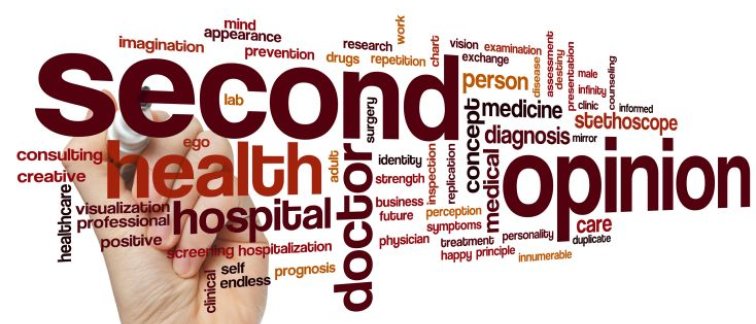Research questions
1. What motivates cancer patients to request a second opinion?
2. What are consequences of second opinions for patients?
3. How do patients and oncologists communicate during second opinion consultations?
Design
77 patients visiting a medical oncologist for a second opinion participated in this mixed methods study. Patients, their referring oncologist, and the oncologist providing the second opinion completed questionnaires – both before and after the consultation. The second opinion consultation was audio recorded and observationally coded.
Results
What motivates patients to request a second opinion? What do they expect?
Most common reasons for requesting a second opinion:
- wanting expert advice (66%)
- exhausting all options (59%)
- needing more information (24%)
Reduced trust motivated a minority (21%) of patients. Referring oncologists rather accurately anticipated these motivations, but most did not recognize patients’ information needs. Two thirds of patients (66%) expected to receive a different opinion.
What consequences has the second opinion for patients?
The vast majority of patients (90%) received a medical advice that was similar to the first opinion. Patients’ uncertainty, but not anxiety was significantly reduced after the SO. Over time, trust was restored in patients who were motivated by impaired trust.
How do patients and oncologists communicate during second opinion consultations?
Minimal time was spent talking about patients’ motivations for requesting a second opinion. Oncologists briefly asked about it, but did not explore patients’ motivations. Although 22% of patients expected a treatment transfer, this topic was rarely explicitly discussed and most patients were referred back (77-87%).
Most patients criticized their referring oncologist, whereas consulting oncologists confirmed their colleagues’ statements and actions.
Patients and their family member(s) often asked indirectly for more information about their prognosis. Consulting oncologists responded with little information, and mostly confirmed what patients had heard in the first opinion.
Summary
- Most patient-sought second opinion in medical oncology do not lead to a different medical outcome. Yet, it can give patients more peace of mind.
- Second opinion consultations are not optimally used, because the needs and expectations of patients, their family members, and oncologists are not sufficiently aligned.
Recommendations
Recommendations for patients
Patients need more information and support to manage their expectations of, and better prepare for a second opinion. Therefore, we developed a simple patient preparation/communication aid which is available at www.kanker.nl/secondopinion
Recommendations for oncologists
Oncologists could more directly discuss patients’ motivations and expectations of a second opinion. Moreover, they should be better supported in providing an independent second opinion, while being mindful of the (trust) relationships between all people involved. We translated our findings into various recommendations for both referring and consulting oncologists (Lehmann et al., 2021). We will also use all gathered information to develop hands-on communications skills training for healthcare providers and medical students.
More information
This research was initiated and coordinated by: dr. Marij Hillen, dr. Vicky Lehmann, prof. dr. Ellen Smets (Medical Psychology, location AMC), dr. Filip de Vos (UMC Utrecht), and dr. Jacqueline Stouthard (NKI-AVL). The results were published in four papers:
- Lehmann, V. et al. (2020). Acta Oncologica. https://www.tandfonline.com/doi/abs/10.1080/0284186X.2020.1794036
- Lehmann, V. et al. (2021). Pat Educ Couns. https://www.sciencedirect.com/science/article/pii/S0738399121001816
- van Someren, J. L. et al. (2021). Front Psychol. https://doi.org/10.3389/fpsyg.2021.635422
- van der Velden, N. C. A. (2021). Int J Environ Res Pub Health.
https://www.mdpi.com/1124970

